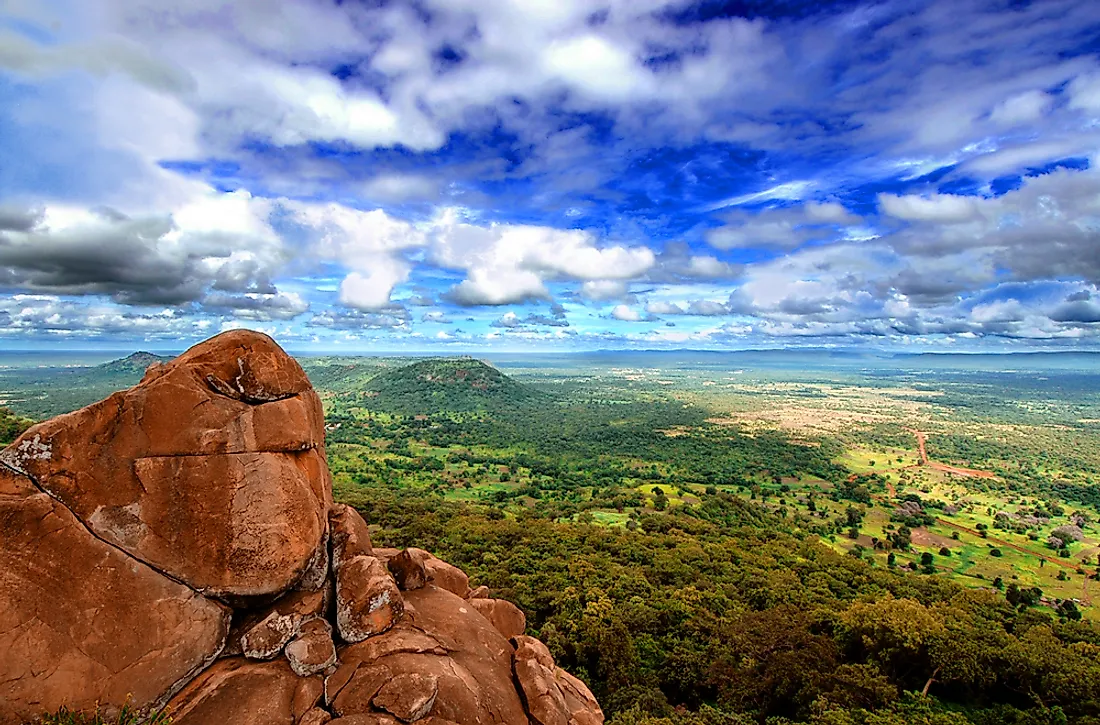The Six Spectacular National Parks Of Senegal

The West African country of Senegal is home to a great diversity of flora and fauna. The country experiences a tropical climate characterized by hot and humid conditions for most of the year. May to November is the rainy season while December to April is the dry season. The country has several types of vegetation zones like a tropical rainforest, Sahel, Guinean mangroves, Sudan-Guinea, etc.
Basse Casamance National Park
Basse Casamance National Park is one of Senegal’s six national parks. It is located close to the village of Oussouye in the country’s Ziguinchor Region. The park was established in 1970 and has an area of 5000 hectares. The park is home to a great diversity of birds. It also hosts many mammalian species with the most notable being the western red colobus, Campbell's mona monkey, African leopard, African forest buffalo, and others. Although the national park is only 20 km away from the Cap Skirring Airport, it is not open to visitors.
Isles des Madeleines National Park
Senegal is home to the world’s smallest national park, the Isles des Madeleines National Park. It is situated on two rocky islands off the coast of Dakar, the capital of Senegal. The larger island is called Sarpan. No human habitation can be seen here. Baobab trees dominate the vegetation in this national park. Many species of birds can be spotted there including a rare species of seabird. This national park has been included in the tentative list of UNESCO World Heritage Site.
Langue de Barbarie National Park
This protected area of Senegal is located in a sandy peninsula on the Atlantic coast of western Senegal. The park has a large area of 2,000 hectares. It supports a great diversity of birds as well as three turtle species including the hawksbill sea turtle, an endangered species.
Djoudj National Bird Sanctuary
The Djoudj National Bird Sanctuary is a safe refuge for birds in Senegal. It is located on the Senegal River’s southeast bank in northern Biffeche area. The sanctuary was established on April 14, 1971, and occupies an area of 160 square km. Although UNESCO inscribed the Djoudj National Bird Sanctuary as a World Heritage Site in 1981, the site entered the list of World Heritage in Danger twice in its history. The introduction of the invasive giant salvinia plant in the sanctuary threatened to wipe out the indigenous vegetation completely on these occasions. The various wetland habitats of the sanctuary attract a range of migratory birds including flamingos, pelicans, aquatic warblers, etc. Today, the construction of the Diama Dam also threatens the flora and fauna of the bird sanctuary.
Niokolo-Koba National Park
Located near Senegal’s border with Guinea-Bissau in the southeastern part of the country, the Niokolo-Koba National Park is a protected area and a UNESCO World Heritage Site. It was founded as a reserved in 1925 and designated a national park in January 1954. In 2007, the park was declared to be an endangered World Heritage Site. Woodland savannah, semi-arid Soudanese forest, and wetlands cover most of the park. 1500 species of plants survive in the Niokolo-Koba. A great diversity of wildlife including 80 mammalian species, 60 fish species, 38 species of reptiles, 20 amphibian species, and hundreds of bird species live in the park. Some of the most iconic animals of the Niokolo-Koba are African elephants, wild buffaloes, lions, chimpanzees, hippopotamus, etc. The notable birdlife of the park includes martial eagle, black crowned crane, Arabian bustard, etc. Three species of crocodiles also live in the waters of the park.
Saloum Delta National Park
The Saloum Delta National Park is a large protected area located in the Saloum Delta of Senegal at the confluence of the North Atlantic Ocean and the Saloum River. This national park is also a UNESCO World Heritage Site and part of a biosphere reserve. It was established on April 3, 1984. The park has a variety of habitats including marine saltwater habitats to intertidal mangroves, forests, and savannah. Many species of bird can be observed at the Saloum Delta including the Eurasian spoonbill, little stint, royal tern, ruddy turnstone, etc.











